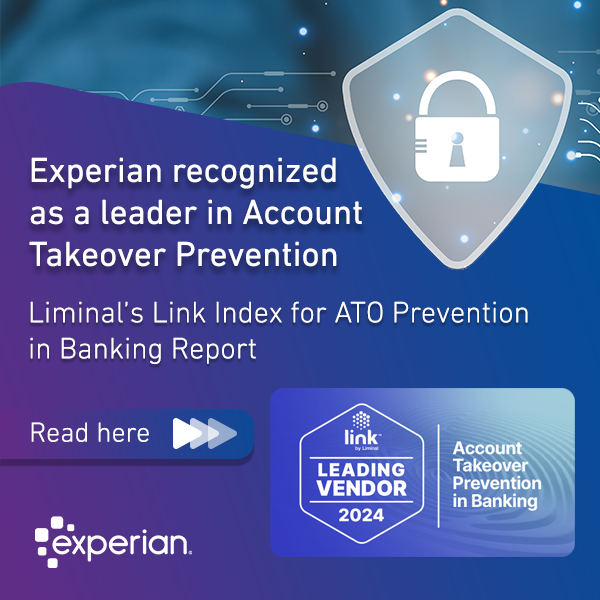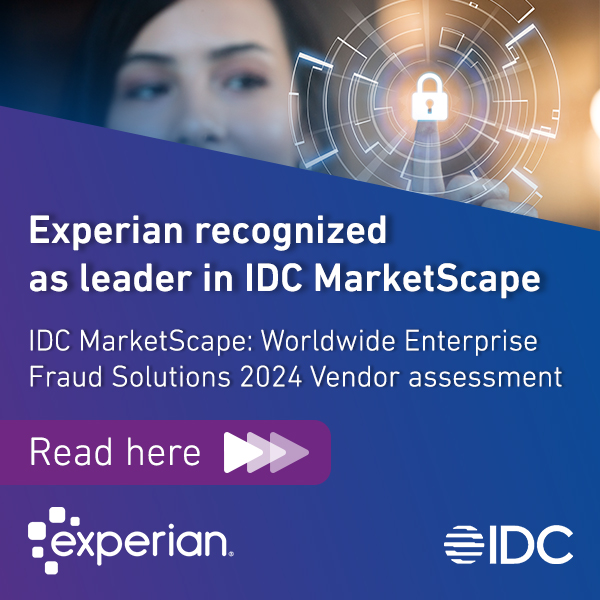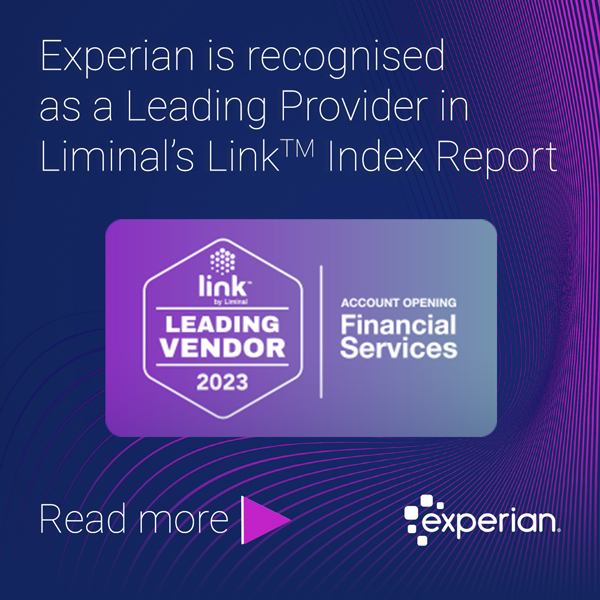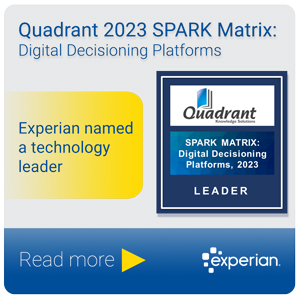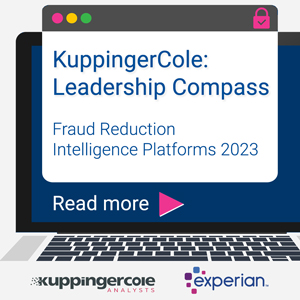 Whether you work for a small or big company, chances are you’ve seen budgets contract in the wake of Covid-19. There are a lot of factors contributing to it: fluctuating economic outlooks, building up loan loss reserves, and re-directing expenditures to keep employees and customers safe and secure. A recent global study of banks and retailers found that the top area of short-term investment was securing the mobile and digital channels. In fact, it also showed that 80% of businesses put a digital identity strategy in place, a 30-point increase since Covid-19 began and 60% of businesses are planning to increase their budgets for credit risk analytics and fraud prevention, respectively. So why is it that only 32% of banks and retailers feel operationally ready for their customer’s continued demand for digital engagement?
Whether you work for a small or big company, chances are you’ve seen budgets contract in the wake of Covid-19. There are a lot of factors contributing to it: fluctuating economic outlooks, building up loan loss reserves, and re-directing expenditures to keep employees and customers safe and secure. A recent global study of banks and retailers found that the top area of short-term investment was securing the mobile and digital channels. In fact, it also showed that 80% of businesses put a digital identity strategy in place, a 30-point increase since Covid-19 began and 60% of businesses are planning to increase their budgets for credit risk analytics and fraud prevention, respectively. So why is it that only 32% of banks and retailers feel operationally ready for their customer’s continued demand for digital engagement?
The Capex required to invest in new technology these days requires a fiercely competitive business case. Not forgetting to mention, if approved, it could be a while before you see a return on your investment. But it doesn’t mean the latest advancements and innovation available for managing credit risk or fraud risk is out of reach. Getting more out of your existing tools and technologies is easier to implement and quick to deliver results. In fact, since Covid-19 began, hundreds of clients have optimized their use of credit and fraud risk software and analytics, helping them focus on creating more meaningful customer relationships and saving them millions in potential losses. Here are two examples of how you can get the most out of your existing technologies today and a checklist for evaluating your current tools.
Device recognition
Beyond securing systems against Cybersecurity threats, businesses need to think like the criminals they’re trying to deflect. If it seems like the world all went digital overnight because of Covid-19, then you can bet fraudsters were one step ahead exploiting the blind spots in the customer relationships you quickly moved online. But how do you recognize your customer behind their mobile device or computer screen? One way is to discern a fraudulent (or “mimic”) device from a genuine one. Having access to this information allows you to swiftly see the same device repeating both good and bad behavior and thus have a better chance of isolating the mimic device and mitigating fraud attacks. This is done by creating a strong probabilistic measure to determine whether two events are from the same device or not. How does this help? It helps to reduce over-firing fraud velocity rules and more precisely out-sort fraud events for manual review. It’s not as complicated as it sounds, and many businesses already have access to this device intelligence data which simply requires them to either turn it on or upgrade their fraud management systems to its latest version. In fact, additional device data points are always being added, and upgrading this layer is often recommended as it can provide up to 85% improvement in performance.
Bottom-line: Device data bolster the effectiveness of your customer identity and fraud defenses with little impact on operational resources and reduces friction on your customer’s digital experience.
Machine learning
Innovations in decision management are having an impact on areas traditionally associated with predicting consumer behavior, such as credit risk, collections, and fraud detection. The ubiquity of data nowadays requires the methods used to derive actionable insights to evolve and most lenders globally have started to adopt advanced analytics. Nearly 70% of businesses increasing their use of machine learning for determining creditworthiness since Covid-19 began. For the collections process, it has helped to determine the best way to contact a delinquent customer or the best treatment to use as a customer exits Covid-induced forbearance? For card, mortgage, and automotive portfolios, machine learning has played a strategic role in creating and implementing pricing strategies to determine the most accurate decisions for financing terms.
Perhaps it’s in fraud detection where machine learning is having the biggest impact. Unlike how it’s applied in credit risk decision strategies, machine learning used for fraud detection can be trained to learn and improve with experience without explicitly being told to do so. It excels at solving problems where the “problem space” cannot be defined easily by rules, which makes it a great complement to mature rules-based fraud management systems. Furthermore, machine learning models can take advantage of the different data points from all backing applications at the time of any single transaction, login, or submission. This produces a final decision that’s more accurate than that produced by a simple rules-based approach or manual decision matrix. Attributes that once provided minimal lift when analyzed in a silo may now provide a substantial lift to predict credit risk or prevent a fraud attack when combined with multiple data elements. Conversely, legitimate events that were inadvertently triggered by traditional fraud detection methods can be identified as authentic before having a negative impact on the customer’s experience.
Bottom-line: A layered approach continues to be a key component in any credit decision or fraud detection solution and machine-learning models are the final call in your decision workflow strategy so they can leverage all the previous decision data.
Checklist: Evaluate whether you’re getting the most from your decision technology
- Is your current solution providing the results you need? Avoid comfort in patterns and request a business review of your current solution to analyze performance. It may reveal unknown gaps and opportunities to improve your business results.
- How do your results compare to your peers? Some peer benchmarking is publicly available, but most vendors offer peer (blind) benchmarking using your specific performance data. It’s worth the ask!
- Are you using all the functionality your tool has to offer? Sometimes decision technology is implemented with a myopic focus on solving a specific problem or used in a specific area despite a broad range of functionality available that covers more use cases.
- Are you using the most up-to-date version of your tools? Check with your vendor right away and stay informed regarding newer versions. Upgrades generally require less effort and cost than a new solution and by continuously monitoring for the latest version, you’re able to meet current regulatory and policy standards.
- Are there any ‘add-ons’ available? Your existing decision technology may offer add-ons to enhance your current solution. Add-ons such as new or enriched data sets, updated scores or models or new software features may extend the business usage of a solution to different processes and within additional departments.
- Are your technologies integrated to enhance your credit risk and fraud risk decision workflow? Integrating your technologies can help you to execute credit and fraud strategies seamlessly with less chance for error, manual intervention, or duplicating actions across disparate systems.
Technology is critical in meeting customer demand and staying competitive in any market. It can help balance the demand for internal resources while providing the service your customers deserve. But as organizations look to stay competitive, and agile through a volatile economic time, remember the importance and tangible benefits of optimizing what you already have in place.
Related articles:
- Global research study: The impact of Covid-19 on consumer behaviors and business strategies
- Podcast: Banking trends and opportunities in the post-Covid-19 era
- Are traditional online identification methods becoming obsolete?
- Case study: Layered behavioral biometrics, device intelligence and machine learning
